
The Gem of the Adriatic: Piran
Discover the enchanting coastal town of Piran, Slovenia, where Venetian architecture meets crystal-clear waters and stunning Adriatic vistas.
Piran is a charming coastal town located on the Adriatic Sea in Slovenia. Known for its Venetian architecture, Piran is a picturesque destination that offers a blend of history, culture, and natural beauty. The old town is a delight to explore with its narrow winding streets, colorful buildings, and delightful squares. The main square, Tartini Square, is named after the famous violinist Giuseppe Tartini, who was born in Piran. The square is surrounded by beautiful buildings including the Tartini House and the Town Hall. From here, you can enjoy a leisurely stroll to the Church of St. George, which sits on a hill overlooking the town. The view from the church offers a stunning panorama of the town and the sea. Piran is also known for its crystal-clear waters and beautiful beaches. The town's seaside promenade is perfect for a relaxing walk or a refreshing swim. The local seafood is a must-try, with many restaurants offering fresh catches of the day. Piran's marina is a great spot to watch the sunset and enjoy the tranquil atmosphere of this quaint town. Whether you are a history buff, a foodie, or just looking to relax by the sea, Piran has something to offer. Its blend of cultural heritage and natural beauty makes it a unique and unforgettable destination.
Local tips in Piran
- Visit Tartini Square at sunset for a magical experience.
- Take a walk up to the Church of St. George for panoramic views.
- Try the local seafood at one of the many seaside restaurants.
- Explore the narrow streets of the old town for hidden gems.
- Don't miss the Maritime Museum for a glimpse into Piran's seafaring history.
The Gem of the Adriatic: Piran
Piran is a charming coastal town located on the Adriatic Sea in Slovenia. Known for its Venetian architecture, Piran is a picturesque destination that offers a blend of history, culture, and natural beauty. The old town is a delight to explore with its narrow winding streets, colorful buildings, and delightful squares. The main square, Tartini Square, is named after the famous violinist Giuseppe Tartini, who was born in Piran. The square is surrounded by beautiful buildings including the Tartini House and the Town Hall. From here, you can enjoy a leisurely stroll to the Church of St. George, which sits on a hill overlooking the town. The view from the church offers a stunning panorama of the town and the sea. Piran is also known for its crystal-clear waters and beautiful beaches. The town's seaside promenade is perfect for a relaxing walk or a refreshing swim. The local seafood is a must-try, with many restaurants offering fresh catches of the day. Piran's marina is a great spot to watch the sunset and enjoy the tranquil atmosphere of this quaint town. Whether you are a history buff, a foodie, or just looking to relax by the sea, Piran has something to offer. Its blend of cultural heritage and natural beauty makes it a unique and unforgettable destination.
When is the best time to go to Piran?
Iconic landmarks you can’t miss
Tartinijev trg
Explore the enchanting Tartinijev Trg in Piran, Slovenia—a historical square rich in culture, stunning architecture, and vibrant local life.

Walls of Piran
Discover the historic Walls of Piran, a breathtaking landmark offering stunning views and a glimpse into Slovenia's rich cultural heritage along the Adriatic Coast.

Piranski svetilnik
Explore the breathtaking Piranski Svetilnik, a scenic lighthouse in Piran offering stunning Adriatic views and a glimpse into Slovenia's maritime history.

Akvarij Piran
Explore the vibrant marine life at Akvarij Piran, a captivating aquarium in Slovenia that showcases the beauty of the Adriatic Sea.

Duomo di San Giorgio
Explore the stunning Duomo di San Giorgio, a magnificent Catholic cathedral in Piran offering breathtaking views and rich cultural heritage.

Muzej školjk
Explore Piran’s Muzej školjk – a captivating museum showcasing a remarkable collection of shells from around the globe in a charming coastal setting.
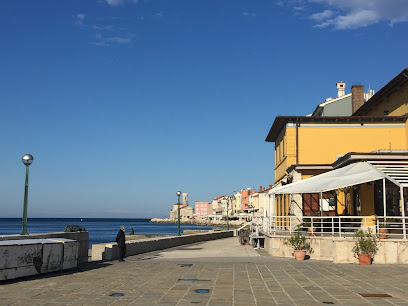
Sergej Mašera Maritime Museum
Explore Slovenia's maritime heritage at the Sergej Mašera Maritime Museum in Piran, where history meets the sea in an enchanting setting.
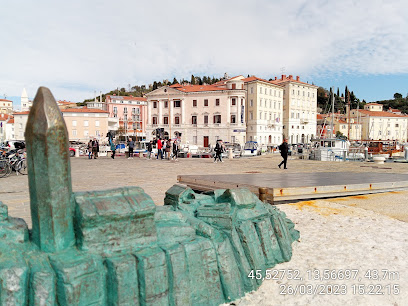
Trg 1. maja
Discover the charm of Trg 1. maja, Piran's historical square surrounded by delightful cafes and stunning architecture, perfect for relaxation and exploration.

Mediadom Pyrhani
Immerse yourself in the vibrant arts and culture of Piran at Mediadom Pyrhani, a lively center for exhibitions and performances.
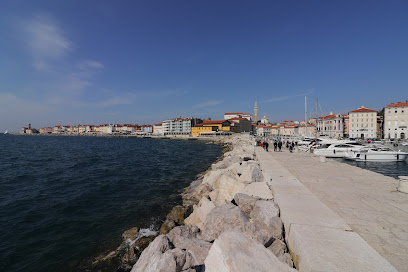
Port Piran
Explore the scenic beauty and rich history of Port Piran, a charming marina on the Adriatic Sea, where culture and relaxation meet.

Pristanišče Piran
Explore the enchanting beauty of Pristanišče Piran, a historical landmark where medieval charm meets stunning Adriatic views in Slovenia.
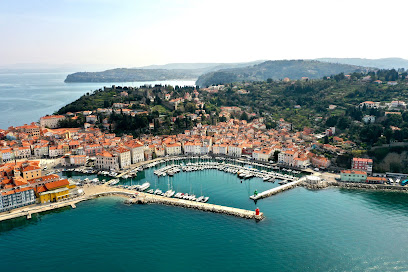
Mermaid of Piran
Experience the charm of the Mermaid of Piran, a stunning landmark symbolizing Slovenia's maritime heritage and coastal beauty.

Slovenian historical coast, Piran
Explore the historic charm of Piran, Slovenia, where Venetian architecture meets stunning Adriatic views for an unforgettable coastal escape.

Obelisco de Fornace
Explore the Obelisco de Fornace in Piran, a historical monument that reflects the town's rich heritage and picturesque coastal charm.
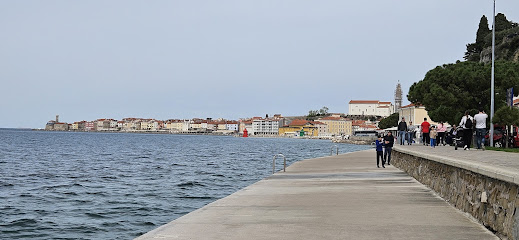
Punkt widokowy
Discover stunning panoramic views of the Adriatic Sea at Punkt Widokowy in Piran, Slovenia's hidden gem for breathtaking scenery.

Unmissable attractions to see
Unity of Italy Square
Discover the architectural beauty and vibrant atmosphere of Unity of Italy Square, a historical landmark in Trieste, Italy, overlooking the Adriatic Sea.

Miramare Castle
Explore the historic elegance of Miramare Castle, a stunning blend of architecture and nature on the Adriatic coast in Trieste, Italy.

Skocjan Caves
Discover the enchanting Skocjan Caves in Slovenia, a UNESCO World Heritage Site showcasing breathtaking natural formations and rich historical significance.

Jama - Grotta Baredine
Discover the breathtaking underground beauty of Jama - Grotta Baredine, an Istrian natural wonder filled with stunning geological formations.

Church of St. Euphemia
Discover the enchanting Church of St. Euphemia in Rovinj, a baroque masterpiece offering breathtaking views and rich cultural heritage.
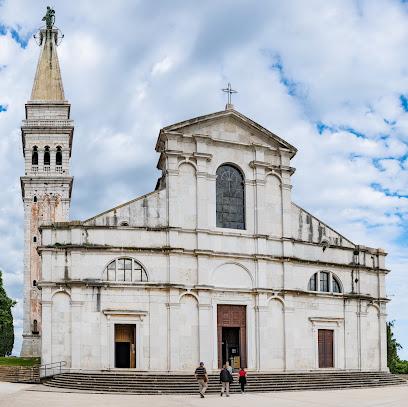
Basilica di Santa Maria Assunta
Explore the breathtaking Basilica di Santa Maria Assunta in Aquileia, a UNESCO World Heritage site showcasing stunning early Christian art and architecture.

Duino Castle / Devinski Grad
Discover the rich history and breathtaking views at Duino Castle, a stunning tourist attraction overlooking the Adriatic Sea.

Bibione Spiaggia
Experience the charm of Bibione Spiaggia, where sun-soaked beaches meet vibrant culture and delicious cuisine along the Adriatic coast.

Castello di San Giusto
Discover the rich history and breathtaking views at Castello di San Giusto, a must-visit fortress in Trieste, Italy.

Canal Grande
Explore the picturesque Canal Grande in Trieste, a vibrant hub of culture, dining, and stunning architecture that captures the essence of Italy.

Roman Theatre of Trieste
Explore the Roman Theatre of Trieste, an iconic historical landmark that showcases the grandeur of ancient Rome amidst breathtaking scenery.

Cattedrale di San Giusto Martire
Explore the breathtaking Cattedrale di San Giusto Martire, a stunning blend of history, architecture, and spirituality in the heart of Trieste.
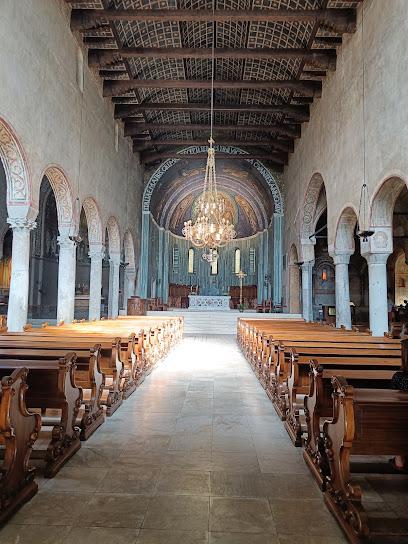
Revoltella Museum
Explore the Revoltella Museum, where modern art meets history in the heart of Trieste, Italy. A cultural gem for art lovers and tourists alike.

Molo Audace
Experience the charm of Molo Audace in Trieste, where stunning sea views meet rich cultural history, perfect for unforgettable moments.

Distillery Aura
Experience the essence of Croatian spirits at Distillery Aura in Buzet, where tradition meets craftsmanship in every sip.

Essential places to dine
Fritolin Pri Cantini
Experience authentic Slovenian seafood at Fritolin Pri Cantini in Piran – where local flavors meet stunning coastal views.

Stazione Parenzana
Discover Stazione Parenzana: where delectable steaks meet craft brews in the beautiful Portorož.

Restavracija Pavel 2 Lovrečič Protić Liliana s.p.
Experience exceptional seafood dining at Restavracija Pavel in Piran - where fresh ingredients meet stunning coastal views.

Pirat Piran
Experience authentic Slovenian coastal cuisine at Pirat Piran – where every meal is a celebration of local flavors and stunning sea views.
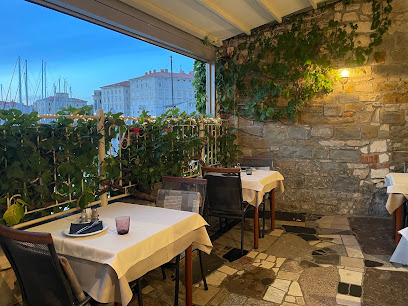
Sarajevo 84
Experience authentic Eastern European cuisine at Sarajevo 84 in Piran—where tradition meets taste in every delightful dish.

Hotel Piran
Discover luxury and breathtaking views at Hotel Piran - your perfect seaside escape on Slovenia's Adriatic coast.

Fritolin, gostinstvo, d.o.o.
Experience fresh seafood delights at Fritolin in Portorož, where local flavors meet stunning coastal views for an unforgettable dining experience.
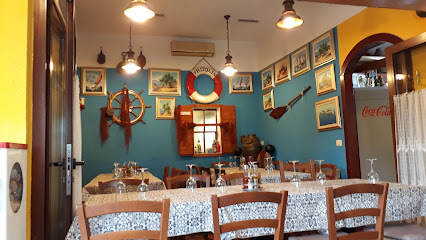
Cafinho Piran
Discover Cafinho Piran: A delightful bar offering exquisite brunch options and exceptional coffee in picturesque Piran.

Pinija Restaurant & Beach bar
Experience exquisite Mediterranean cuisine with stunning sea views at Pinija Restaurant & Beach Bar in Portorož.
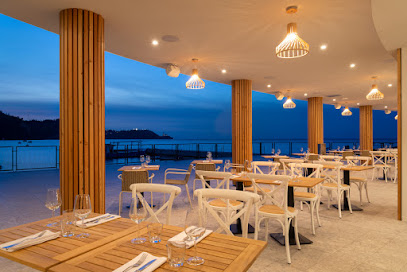
Gostilna Park
Experience authentic Slovenian cuisine at Gostilna Park in Piran, where local flavors meet stunning coastal views for an unforgettable dining experience.
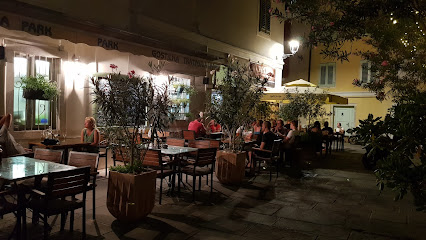
Restavracija Tri Vdove Piran
Experience authentic Slovenian cuisine with stunning sea views at Restavracija Tri Vdove in Piran.

Pri Mari
Experience exquisite seafood dining at Pri Mari in Piran—where fresh flavors meet stunning coastal views.

Restavracija Pavel
Experience authentic Mediterranean flavors at Restavracija Pavel, where fresh seafood meets breathtaking views in beautiful Piran.

Barbara Piran Beach Hotel & Spa
Discover luxury at Barbara Piran Beach Hotel & Spa - where relaxation meets exquisite dining on Slovenia's stunning Adriatic coast.

Rostelin
Experience authentic Slovenian flavors at Rostelin in beautiful Piran—where culinary artistry meets coastal charm.

Markets, malls and hidden boutiques
Mercator
Experience the heart of Piran’s culinary scene at Mercator, your go-to supermarket for local flavors and everyday essentials.

Supermarket Mercator d.d. Poslovni sistem
Experience the local flavors and essentials at Supermarket Mercator in Piran, your go-to grocery store for all your shopping needs while exploring Slovenia.
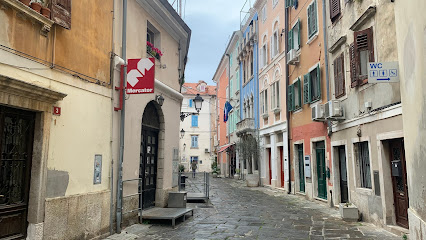
GourmIstra
Discover the flavors of Piran at GourmIstra, a boutique dedicated to local culinary treasures and authentic Slovenian products.
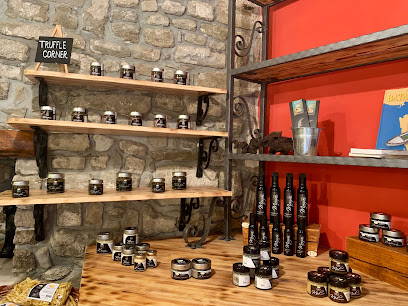
Pekarna Rina, pekarstvo in trgovina d.o.o., poslovna enota Piran
Discover the authentic flavors of Slovenia at Pekarna Rina, a charming bakery in Piran offering fresh breads and delightful pastries.

GUESS ACCESSORIES
Explore GUESS Accessories in Portorož for a luxurious selection of handbags and fashion accessories, perfect for every occasion along the stunning Adriatic coast.

Souvenir Store Zaklad
Explore the charm of Slovenia at Souvenir Store Zaklad, your go-to destination for exquisite gifts, gourmet treats, and unique local treasures.

Piranske soline Portorož (Solni cvet) - SOLINE Pridelava soli d.o.o.
Explore the serene salt pans of Piranske Soline in Portorož, a cultural gem showcasing traditional salt production and local heritage.

Market 1. Maj Dijego Križman s.p.
Explore Market 1 in Piran for authentic Slovenian groceries and a taste of local life amidst stunning coastal scenery.

Sailing Point d.o.o. - Specialized Sailing Store
Discover the ultimate sailing experience at Sailing Point d.o.o. in Portorož, Slovenia, where quality gear meets expert advice.

Soline pridelava soli d.o.o.
Explore the serene world of aromatherapy at Soline in Piran, where essential oils and relaxation meet in a beautiful coastal setting.

Nika's tiny house
Explore Nika's Tiny House in Piran for unique Slovenian souvenirs that capture the charm and artistry of this beautiful coastal town.

Taste of Piran
Explore the flavors of Slovenia at Taste of Piran, where local delicacies and artisanal products await you in this charming coastal town.

Studio La.terra
Discover authentic Slovenian craftsmanship at Studio La.terra, your go-to spot for unique handmade pottery and artisan treasures in Piran.

Čokoladnica Piran
Discover the sweet side of Piran at Čokoladnica Piran, where artisan chocolates and confections tantalize your taste buds.

Ribarnica Valmarin - Nataša Kante s.p.
Explore the freshest seafood at Ribarnica Valmarin in Piran, Slovenia, where quality and sustainability meet local tradition.

Essential bars & hidden hideouts
Fritolin Pri Cantini
Discover the authentic taste of Slovenia at Fritolin Pri Cantini, a celebrated restaurant in picturesque Piran offering fresh, local cuisine.

Sarajevo 84
Discover authentic Eastern European flavors at Sarajevo 84, a charming bar & grill in the heart of Piran, Slovenia.
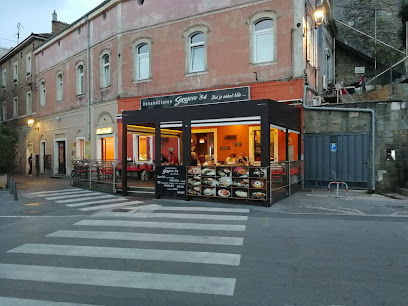
Cafinho Piran
Discover Cafinho Piran, a charming bar and brunch restaurant offering delicious local dishes and refreshing drinks with stunning Adriatic views.

Restavracija Tri Vdove Piran
Savor the authentic flavors of Mediterranean cuisine at Restavracija Tri Vdove, a top dining destination in Piran with breathtaking sea views.

Caffe Teater
Discover the cozy charm of Caffe Teater in Piran, where delightful drinks and a warm atmosphere await every visitor.

Caffe Neptun
Discover the coastal charm of Caffe Neptun in Piran, where exceptional coffee meets stunning sea views and a vibrant atmosphere.

Čakola Caffe Piran
Discover the delightful Čakola Caffe in Piran – a cozy bar offering local wines and stunning Adriatic views, perfect for relaxation and culture.

Punta Caffe
Experience the charm of Punta Caffe, a scenic bar in Piran offering exquisite cocktails and breathtaking views of the Adriatic Sea.
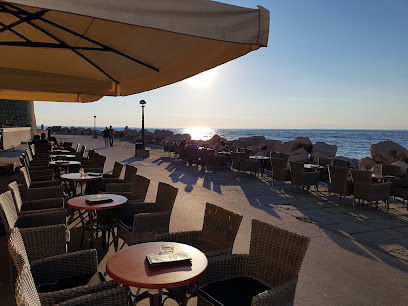
Da Noi
Discover the delightful ambiance of Da Noi, a charming bar in Piran, offering stunning views, local drinks, and a taste of Slovenian culture.
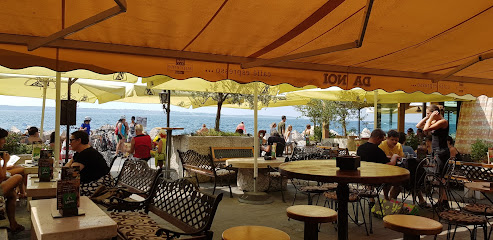
Caffe Galeria Piran
Experience the charm of Caffe Galeria in Piran, where great coffee meets stunning sea views in a cozy atmosphere.

80s cafe bar
Experience the vibrant 80s culture at the 80s Cafe Bar in Piran, where retro decor meets delicious drinks and lively entertainment.

Piranček beach bar
Discover the perfect beachside escape at Piranček Beach Bar, where stunning views and refreshing drinks await you in Piran, Slovenia.

Spužva Beach Bar
Experience breathtaking views and a vibrant atmosphere at Spužva Beach Bar in the heart of Piran, Slovenia.

Labi's bar Piran
Discover the lively and picturesque Labi's Bar in Piran, where stunning views and crafted cocktails create the perfect seaside escape.
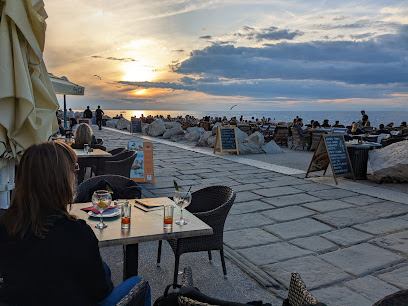
Fine Del Mondo
Discover the essence of Piran at Fine Del Mondo, where exquisite cocktails meet stunning Adriatic views.
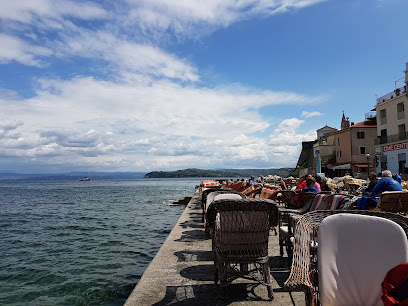
Travel experiences inspired by this city
Explore more travel diariesLocal Phrases
-
- HelloZdravo
[Zdrah-voh] - GoodbyeNasvidenje
[Nah-svee-dehn-yeh] - YesDa
[Dah] - NoNe
[Neh] - Please/You're welcomeProsim
[Proh-seem] - Thank youHvala
[Hvah-lah] - Excuse me/SorryOprostite
[Oh-proh-stee-teh] - How are you?Kako ste?
[Kah-koh steh?] - Fine. And you?Dobro. In vi?
[Doh-broh. Een vee?] - Do you speak English?Govorite angleško?
[Go-voh-ree-teh ahn-gleh-shkoh?] - I don't understandNe razumem
[Neh rah-zoo-mehm]
- HelloZdravo
-
- I'd like to see the menu, pleaseRad bi videl jedilnik, prosim
[Raad bee vee-del yeh-deel-neek, proh-seem] - I don't eat meatNe jem mesa
[Neh yehm meh-sah] - Cheers!Na zdravje!
[Nah zdrahv-yeh!] - I would like to pay, pleaseRad bi plačal, prosim
[Raad bee plah-chahl, proh-seem]
- I'd like to see the menu, pleaseRad bi videl jedilnik, prosim
-
- Help!Pomoč!
[Poh-mohch!] - Go away!Pojdi stran!
[Poy-dee strahn!] - Call the Police!Pokličite policijo!
[Poh-klee-chee-teh poh-lee-tsee-yoh!] - Call a doctor!Pokličite zdravnika!
[Poh-klee-chee-teh zdrahv-nee-kah!] - I'm lostIzgubil sem se
[Eez-goo-beel sehm seh] - I'm illBolno mi je
[Bohl-noh mee yeh]
- Help!Pomoč!
-
- I'd like to buy...Rad bi kupil...
[Raad bee koo-peel...] - I'm just lookingSamo gledam
[Sah-moh gleh-dahm] - How much is it?Koliko stane?
[Koh-lee-koh stah-neh?] - That's too expensiveTo je predrago
[Toh yeh preh-drah-goh] - Can you lower the price?Lahko znižate ceno?
[Lah-koh znee-zah-teh cheh-noh?]
- I'd like to buy...Rad bi kupil...
-
- What time is it?Koliko je ura?
[Koh-lee-koh yeh oo-rah?] - It's one o'clockJe ena ura
[Yeh eh-nah oo-rah] - Half past (10)Pol desetih
[Pohl deh-seh-teeh] - MorningJutro
[Yoo-troh] - AfternoonPopoldne
[Poh-pohl-dneh] - EveningVečer
[Veh-chehr] - YesterdayVčeraj
[Veh-cheh-rye] - TodayDanes
[Dah-nes] - TomorrowJutri
[Yoo-tree] - 1Ena
[Eh-nah] - 2Dva
[Dvah] - 3Tri
[Tree] - 4Štiri
[Shtee-ree] - 5Pet
[Peh-t] - 6Šest
[Shehst] - 7Sedem
[Seh-dehm] - 8Osem
[Oh-sehm] - 9Devet
[Deh-veht] - 10Deset
[Deh-seht]
- What time is it?Koliko je ura?
-
- Where's a/the...?Kje je...
[Kyeh yeh...] - What's the address?Kateri je naslov?
[Kah-teh-ree yeh nahs-lohv?] - Can you show me (on the map)?Mi lahko pokažete (na zemljevidu)?
[Mee lah-koh poh-kah-zheh-teh (nah zehm-lyeh-vee-doo)?] - When's the next (bus)?Kdaj je naslednji (avtobus)?
[Kdahy yeh nah-slehd-nee (ow-toh-boos)?] - A ticket (to ....)Vstopnico (za ...)
[Vstohp-nee-tsoh (zah ...)]
- Where's a/the...?Kje je...
History of Piran
-
Piran's history dates back to ancient times, with evidence suggesting that the area was first settled by the Illyrians. The town later came under Roman influence, as evidenced by archaeological remains such as the Roman necropolis and villa ruins. Piran's strategic location on a peninsula made it a valuable asset for trade and defense during the Roman era.
-
In the 13th century, Piran became part of the Republic of Venice, a period that marked significant growth and prosperity for the town. The Venetian influence is still evident today in Piran’s architecture, such as the town walls, the Church of St. George, and the charming narrow streets. The town thrived as a center for salt production, a critical industry that brought wealth and development.
-
The salt pans of Piran, first developed in the Middle Ages, played a crucial role in the town's economy. The Sečovlje Saltworks, one of the largest and oldest in the region, became a major source of high-quality salt. This industry not only shaped the local economy but also the culture, as the labor-intensive process of salt harvesting created a unique way of life for the people of Piran.
-
Following the fall of the Venetian Republic in 1797, Piran came under the control of the Habsburg Monarchy and later the Austro-Hungarian Empire. The town saw further development during this period, including the construction of new buildings and infrastructure. After World War I, Piran was annexed by Italy, which led to significant changes in the town's administrative and cultural landscape until World War II.
-
After World War II, Piran became part of the Socialist Federal Republic of Yugoslavia. This period saw extensive urban development and modernization. The town’s historical and cultural assets were preserved even as new industrial and residential areas emerged. Piran’s identity as a coastal town with a rich maritime heritage continued to thrive during these years.
-
With Slovenia's independence from Yugoslavia in 1991, Piran entered a new era of self-determination and growth. Today, it is a vibrant town known for its well-preserved medieval architecture, bustling cultural scene, and scenic coastal views. Tourism has become a significant part of the local economy, with visitors flocking to Piran to experience its rich history, charming streets, and beautiful Adriatic Sea.
Piran Essentials
-
Piran is located on the Slovenian coast along the Adriatic Sea. The nearest international airport is Ljubljana Jože Pučnik Airport, approximately 1.5 hours away by car. From the airport, you can take a shuttle bus, taxi, or rent a car to reach Piran. Alternatively, you can take a train to Koper and then a local bus or taxi to Piran. There are also seasonal ferry services from Venice, Italy, directly to Piran.
-
Piran is a pedestrian-friendly town, and its historic center is best explored on foot. For longer distances, local buses connect Piran with nearby towns like Portorož and Koper. Taxis are available but can be more expensive. Renting a bike or scooter is a popular option for getting around, especially during the summer. Parking in Piran's old town is limited, so it's advisable to use designated parking areas outside the town center.
-
The official currency in Slovenia is the Euro (EUR). Credit and debit cards are widely accepted in hotels, restaurants, and shops in Piran. ATMs are available throughout the town, but it's a good idea to carry some cash for smaller establishments and market purchases. Tipping is appreciated but not mandatory; rounding up the bill or leaving a small amount is usually sufficient.
-
Piran is generally a safe destination for tourists. However, like any tourist area, it's important to stay vigilant, especially in crowded places. Petty theft, such as pickpocketing, can occur, so keep an eye on your belongings. The old town and the waterfront are well-patrolled, but avoid poorly lit areas at night. There are no specific high-crime areas targeting tourists.
-
In case of an emergency, dial 112 for immediate assistance. This number connects you to fire, medical, and police services. The local police station and medical facilities are available in Piran. Pharmacies are also accessible for minor health issues. It is highly recommended to have travel insurance that covers medical emergencies.
-
Fashion: Do dress modestly, especially when visiting religious sites. Avoid wearing beachwear in town areas. Religion: Do respect local customs and traditions. When entering churches, cover your shoulders and knees. Public Transport: Do validate your ticket before boarding. Don't eat or drink on public transport. Greetings: Do greet people with a handshake. A friendly 'Dober dan' (Good day) is appreciated. Eating & Drinking: Do try local seafood and wines. Don't rush through meals; dining is a leisurely activity in Piran.
-
To experience Piran like a local, visit the local fish market early in the morning to see the daily catch. Take a walk along the town walls for stunning views of the Adriatic Sea. Engage with locals in small cafes and try the local specialty, 'Piran sea bass'. Attend local festivals and events, such as the Tartini Festival, to immerse yourself in the town's culture. For a unique experience, take a boat trip to the nearby salt pans of Sečovlje.
Nearby Cities to Piran
-
Things To Do in Portorož
-
Things To Do in Izola
-
Things To Do in Koper
-
Things To Do in Trieste
-
Things To Do in Sežana
-
Things To Do in Nova Gorica
-
Things To Do in Rovinj
-
Things To Do in Postojna
-
Things To Do in Opatija
-
Things To Do in Pula
-
Things To Do in Bohinj
-
Things To Do in Škofja Loka
-
Things To Do in Ljubljana
-
Things To Do in Venice
-
Things To Do in Bled

















